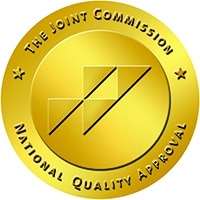Stroke is the fourth-leading cause of death in the United States and the No. 1 cause of adult disability. Strokes occur when blood supply to a part of the brain is interrupted or reduced. If blood supply is stopped, the brain will not only stop receiving blood, but also oxygen. When this occurs, brain cells begin to die and brain damage occurs. It is critical to get to a hospital immediately when suffering a stroke because 1.9 million neurons are lost every minute of a stroke.
When brain cells die during a stroke, abilities controlled by that area of the brain, such as speech, movement, memory and some vision could be lost.
Stroke Risk Factors
- High blood pressure (>120 / 80)
- Age 55 or older
- African American race
- History of TIA
- Smoking
- Diabetes
- High Cholesterol
- Obesity (BMI >25)
- Atrial fibrillation
- Sleep apnea
- Family history of stroke
Dedicated Stroke Care
UofL Health – Jewish Hospital offers specialized stroke care for stroke patients that is tailored directly to their needs. We ensure that our nursing staff is kept up to date on all new education and advancements when it comes to caring for stroke patients. Additionally, several of our nurses have obtained their Stroke Certified Registered Nurse (SCRN) certification demonstrating their expertise in stroke care.
UofL Health – Jewish Hospital also offers a wide range of stroke services aside from our nursing care that includes physical therapists, speech-language pathologists, occupational therapists and social workers. Our priority is helping our patients reach their goals both physically and mentally post-stroke.
We believe that it’s important to start the rehabilitation process as early as possible to maximize recovery and get patients back to their lives. Our rehabilitation process begins at the beside during hospitalization, directly following patient stabilization, and continues throughout outpatient follow-up.
Awards and Recognition
Get with the Guidelines: Stroke
The Joint Commission Certified Primary Stroke Centers at UofL Health – Jewish Hospital part of the UofL Health – Brain & Spine Institute, provide the standard of stroke care to support better patient outcomes. The facility is a recipient of the Get With The Guidelines-Stroke Gold Plus Award from the American Heart Association/American Stroke Association. The award recognizes UofL Health – Jewish Hospital's commitment and success in implementing a higher standard of stroke care, ensuring patients receive treatment according to nationally accepted standards.
UofL Health – Stroke
Jewish Hospital is proud to be part of the UofL Health – Stroke. With five hospitals, multiple ambulatory care centers, tele-stroke sites, outpatient clinics and stroke support groups, our stroke program will guide you from diagnosis to recovery. As part of our network, the experts at UofL Health –Comprehensive Stroke Center are always available for urgent consultation. UofL Hospital, as the first stroke center in Kentucky, continues to offer the latest technologies for eligible patients such as thrombectomy. By treating thousands of stroke patients per year at UofL Health, we remain true experts in stroke.


